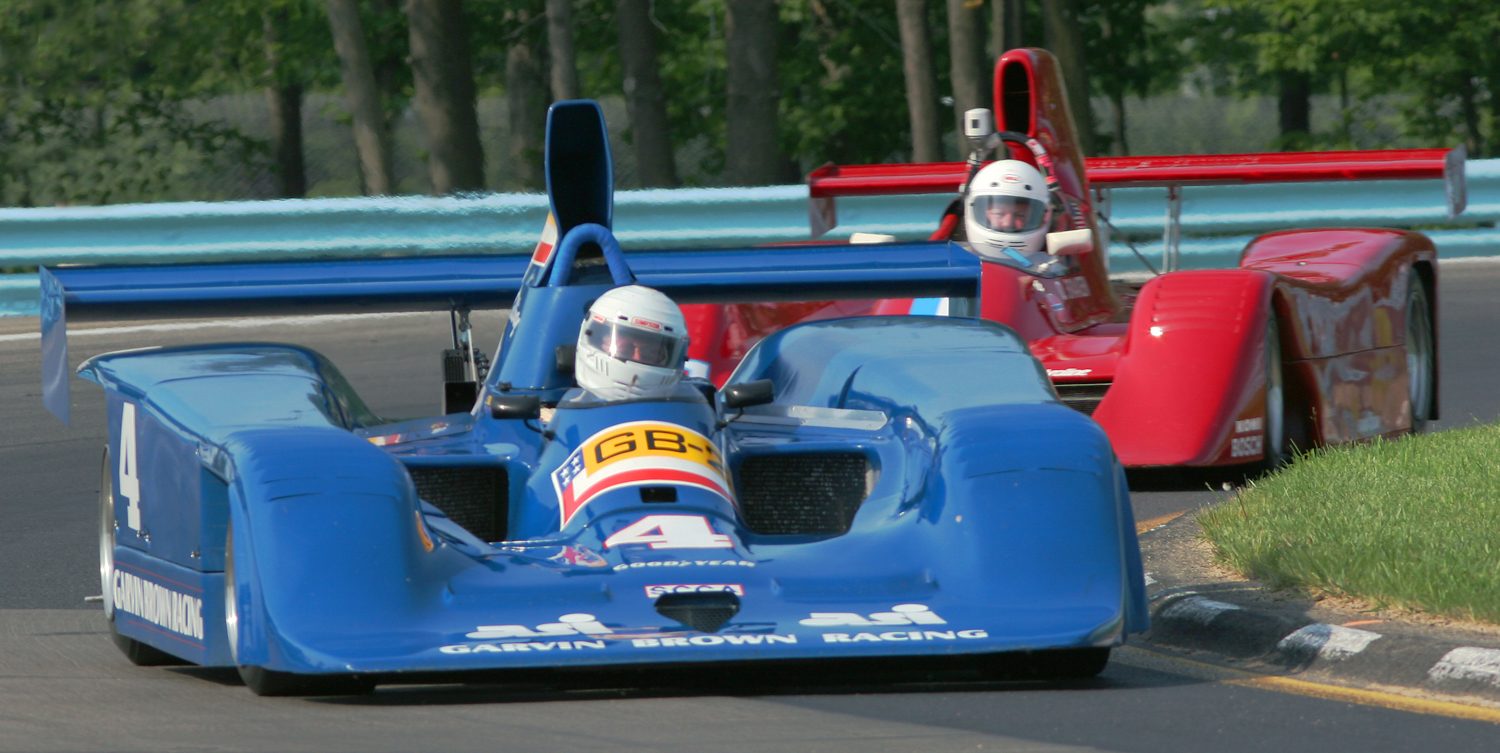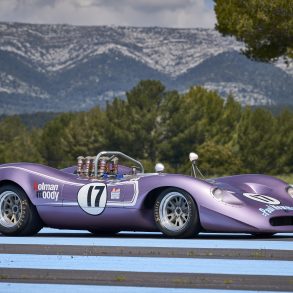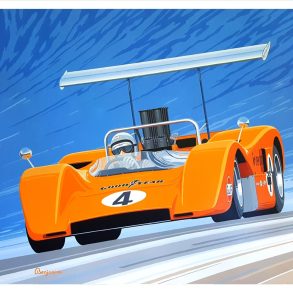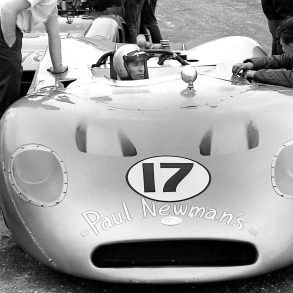Rodney Dangerfield can’t get no respect. “Ho, I can’t get no respect! The other day I asked my wife if she wanted to have sex. She said, ‘Sure, but the mailman won’t be here for another forty minutes!’” Ba-dum-dum-crash.
But seriously, folks…if the king of “no respect” were a historic racer, what would be his ideal racecar? A Renault 2CV? No, in many areas of the world (OK, maybe not many areas, but a couple!) they are raced with great enthusiasm. A Trabant? Hmm, getting closer, but in Eastern Europe there is still a strong, “respectable” following.
No, without doubt the one category of racecar that, to this day, still commands the least amount of respect, considering its history, is the center-seat Can-Am car. We know why Rodney can’t get any respect, but what’s up with the later Can-Am cars?

As background, from the mid-’60s to the late-’80s, the SCCA had the uncanny gift of creating some of the greatest racing series known to man and then totally destroying them. First came the original Can-Am, or as some would say the real Can-Am (see, already no respect for our center-seat friends). As we all know, the SCCA built the Can-Am into one of the greatest, most technologically innovative series of all time. However, by the mid-’70s, the rules-makers had reduced the series to a shadow of its former self and it eventually imploded under its own weight. However, during roughly this same period the SCCA was nurturing an exciting, small-block V8-powered, open-wheel series known as F5000. By 1975-1976, the F5000 had blossomed into a major professional series with big purses, top-line international drivers, exciting racing and a strong following. So what did the SCCA decide to do? That’s right! Slap fendered bodywork on the cars and rename it – what else?– the Can-Am!
So after several years of great open-wheeled racing, the boffins at the SCCA reshaped it, renamed it, and – in so doing – killed one great race series and doomed another to an eternal purgatory of ignominy. Just like our friend Rodney, the center-seat Can-Am series never really got the respect it deserved. But what makes this story all the more cruel is the fact that from 1977-1986 the Can-Am enjoyed some truly outstanding racing. The problem is, no one today seems to remember it, or worse, care!
The list of drivers who competed during this period of the Can-Am reads like a “Who’s Who” of the last 30 years of motorsport: names like Mario Andretti, Alan Jones, Jacky Ickx, Patrick Tambay, Jean-Pierre Jarier, Vern Schuppan, Gilles Villeneuve, Jacques Villeneuve, George Follmer, Al Unser, Jr., Bobby Rahal, Brian Redman, Al Holbert, Danny Sullivan, John Morton and Elliot Forbes-Robinson, just to name a few!
And the cars were equally as diverse: Lola, Chevron, Frissbee, Schkee, Ensign, March, VDS, Prophet, Elfin, Spyder and dozens of one-offs and home-builts. This was one of the last bastions of professional motorsport where a person could still build their own car, show up on race day and stand even a ghost of a chance of running with the big boys.
So in the final analysis, we have nearly a decade of great drivers, competing in ultra-fast cars and having some dynamite racing. So where are the vast fields of historic center-seaters? What happened? The center-seat Can-Am series has become the racing equivalent of the land that time forgot. Somehow historic racing has seemingly passed it by. Sure, you will see the occasional car at an event here or there. But considering the size and scope of the series, one can’t help but think that these cars have been overlooked by the historic racing community. In fact, surprisingly few clubs even have a designated category that the cars are allowed to run in.
What baffles me about all of this is the fact that we have – for the most part – embraced a number of other types of more modern racecars including Formula Atlantics, NASCAR stock cars, Super Vees and GTP/Group C cars. Did the center-seat Can-Am guys forget to wash out their Nomex undies? Do we still harbor a latent grudge about these cars sealing the fate of F5000? Will the center-seat Can-Am cars ever get any respect?
If Rodney Dangerfield were a historic racer, he’d probably spend most of his time at the track saying, “Take my Can-Am car…please!!”










